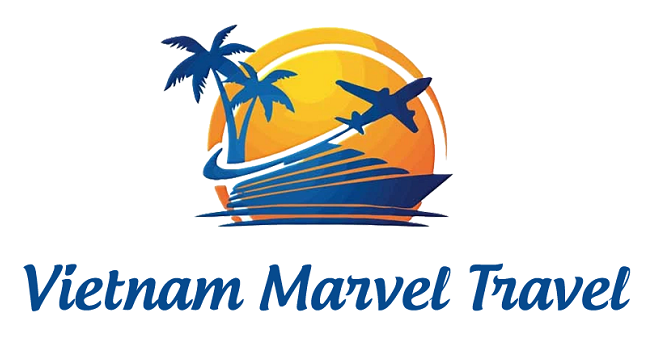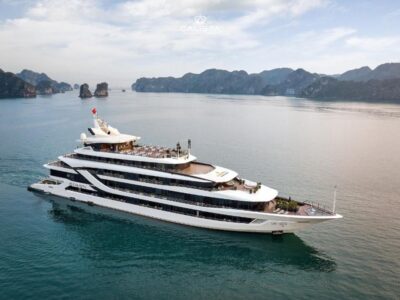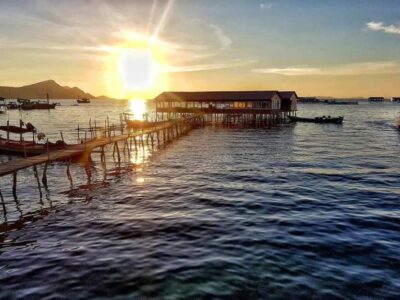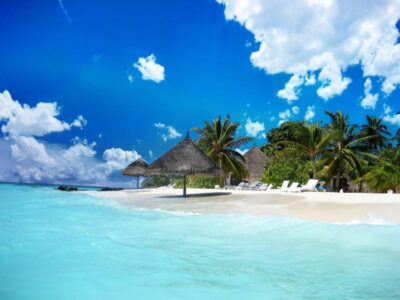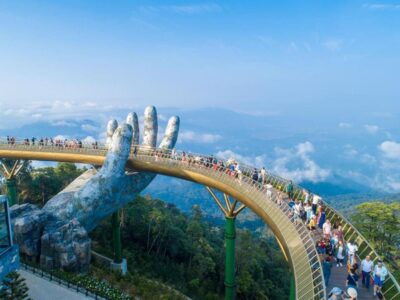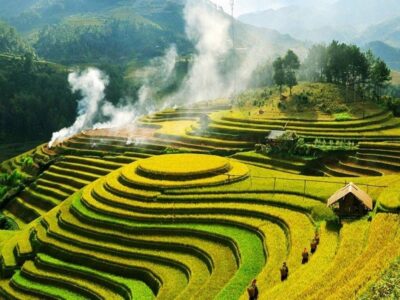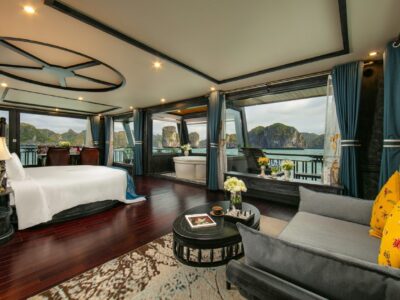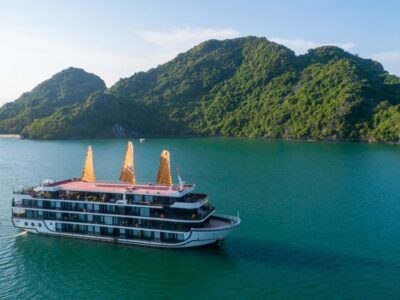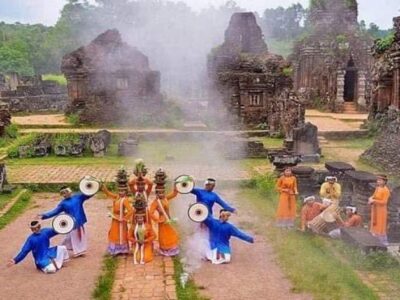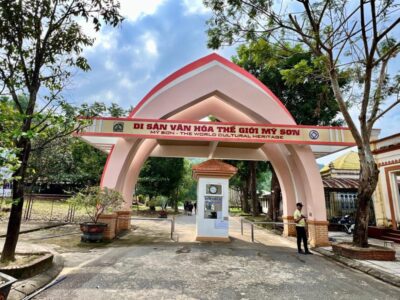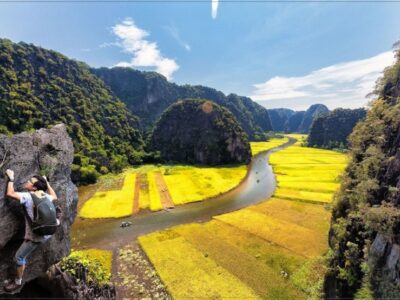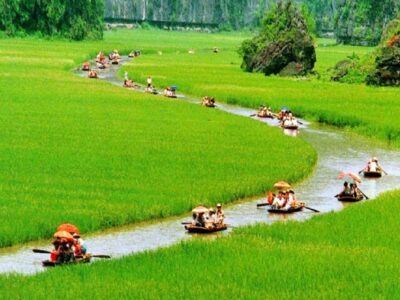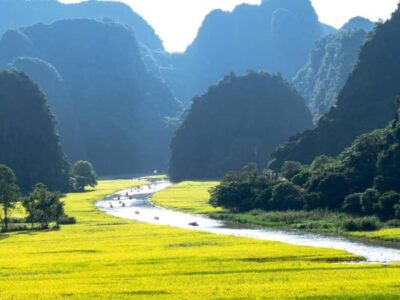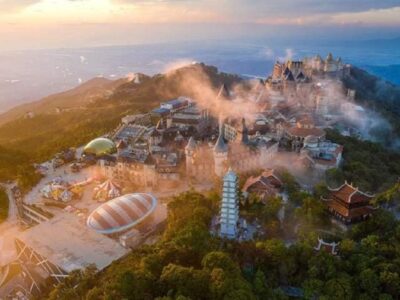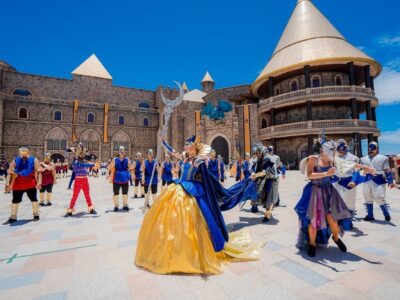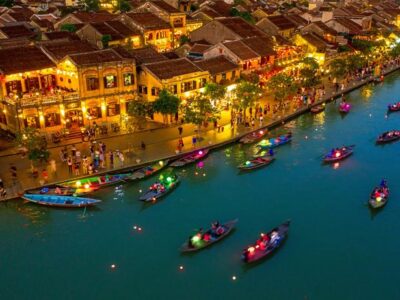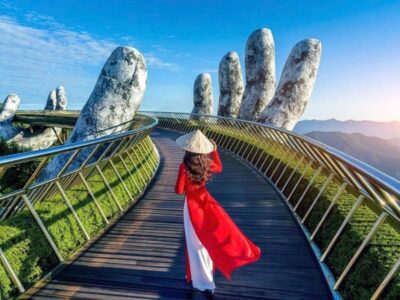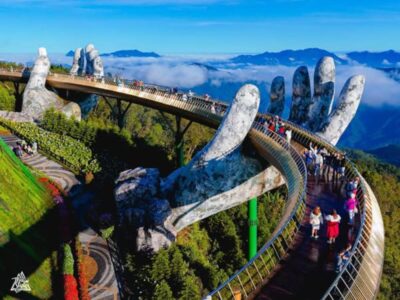DESTINATION
Explore the Most Captivating Vietnam Destinations
Discover the best of Vietnam in 2025–2026 with our expertly designed package tours. From the emerald waters of Ha Long Bay and Hanoi’s historic Old Quarter to the lantern-lit charm of Hoi An and the dynamic energy of Ho Chi Minh City, each destination offers unforgettable scenery, cuisine, and culture. Whether you’re looking for adventure, relaxation, or cultural discovery, our Vietnam tour packages take you straight to the heart of each place.
✅ Best prices guaranteed
✅ Authentic local experiences
✅ Tailored for 2025–2026 travel trends
🌏 Explore the Most Captivating Vietnam Destinations in 2025–2026
Planning your next adventure? Let us guide you through the most breathtaking Vietnam destinations that belong on every traveler’s bucket list. Whether you’re a nature lover, culture seeker, foodie, or history buff, Vietnam offers an extraordinary blend of scenic beauty, rich heritage, and authentic experiences.
From the misty mountains of Sapa, the limestone karsts of Ha Long Bay, to the timeless charm of Hoi An, the buzzing streets of Hanoi, and the vibrant energy of Ho Chi Minh City (Saigon)—each stop unveils a new layer of Vietnam’s soul.
✨ Top Vietnam Destinations You Can’t Miss
🏞 Northern Vietnam
-
Hanoi – Explore the Old Quarter, Hoan Kiem Lake, and street food havens.
-
Sapa – Trek through terraced rice fields and meet ethnic minorities.
-
Ha Long Bay – Cruise emerald waters among majestic limestone islands.
-
Ninh Binh – Discover “Halong Bay on land” with ancient temples and river caves.
🌅 Central Vietnam
-
Hue – Wander through imperial citadels and royal tombs.
-
Da Nang – Relax on pristine beaches or visit Marble Mountains.
-
Hoi An – Stroll through lantern-lit streets, tailor shops, and riverside cafes.
-
Phong Nha-Ke Bang – Explore the world’s largest caves and karst landscapes.
🌴 Southern Vietnam
-
Ho Chi Minh City (Saigon) – Dive into the hustle, colonial architecture, and markets.
-
Mekong Delta – Cruise floating markets and lush waterways.
-
Phu Quoc Island – Unwind on white-sand beaches with crystal-clear waters.
-
Con Dao Islands – Escape to untouched beaches and marine life havens.
🎒 Why Choose Our Vietnam Tour Packages?
✅ Best Prices Guaranteed – Travel with unbeatable value and transparent costs
✅ Tailored for 2025–2026 Trends – Designed around the latest traveler interests
✅ Authentic Local Experiences – Home stays, food tours, cultural immersions
✅ Flexible Itineraries – Customizable based on your pace and interests
✅ Expert Guides – Multilingual, licensed, and deeply knowledgeable
💡 Perfect for All Travel Styles
-
Adventure Seekers – Jungle trekking, motorbiking, kayaking, and cave exploring
-
Beach Lovers – Island hopping, snorkeling, and tropical escapes
-
History Enthusiasts – War museums, ancient ruins, and colonial towns
-
Families & Couples – Kid-friendly activities and romantic getaways
-
Solo Travelers – Safe, easy to navigate, and full of friendly locals
📅 Best Time to Visit Vietnam Destinations
-
Spring (Feb–Apr) – Cool, dry, and perfect for outdoor sightseeing
-
Autumn (Sep–Nov) – Pleasant weather and vibrant festivals
-
Summer (May–Aug) – Beach season, ideal for coastal destinations
-
Winter (Dec–Jan) – Great for Northern mountains and cultural celebrations
Vietnam tours, Vietnam travel 2025, Vietnam 2026 packages, where to go in Vietnam, Ha Long Bay cruise, Hanoi street food, Hoi An lantern festival, Phu Quoc beaches, Da Nang resorts, Con Dao diving, Sapa trekking, best time to visit Vietnam, Vietnam itinerary, Vietnam cultural experiences, Vietnam family vacation, Vietnam honeymoon, tailor-made Vietnam tours, Halong Bay tour 2025, Vietnam adventure travel, Vietnam travel tips, Vietnam travel planner, and more.
Ultimate Guide to 25 Vietnam Destinations for 2025: Weather, Travel Tips & Essential Experiences
Vietnam’s alluring blend of breathtaking landscapes, rich cultural heritage, and warm hospitality has transformed it into Southeast Asia’s most captivating travel destination for 2025. Whether you’re drawn to the emerald waters of Ha Long Bay, the terraced rice fields of Sapa, or the vibrant energy of Ho Chi Minh City, this comprehensive guide unveils everything you need for an unforgettable Vietnamese adventure.
Discovering Vietnam’s Remarkable Beauty in 2025
Vietnam has experienced an unprecedented tourism renaissance, with projected visitor numbers reaching a record-breaking 20 million in 2025. This stunning country offers extraordinary value alongside unforgettable experiences, from luxury cruises through limestone karsts to immersive cultural encounters with the country’s 54 ethnic groups.
The appeal lies in Vietnam’s remarkable diversity:
- Geographic Range: 1,650 km from north to south, encompassing mountains, deltas, coastlines, and forests
- Climate Variety: Tropical monsoons in the south to four distinct seasons in the north
- Cultural Depth: Over 4,000 years of history blending Chinese, French, and indigenous influences
- Culinary Excellence: Regional specialties named among the world’s finest street foods by CNN and Lonely Planet
According to the latest Vietnam Tourism Board data, international visitors stay an average of 9.2 days, with an impressive 87% expressing intentions to return—a testament to Vietnam’s enduring allure.
Top 25 Must-Visit Vietnam Destinations in 2025
1. Ha Long Bay: Nature’s Limestone Masterpiece
Ha Long Bay remains Vietnam’s crown jewel, featuring approximately 1,969 limestone islands rising dramatically from emerald waters. This UNESCO World Heritage Site has evolved its tourism offerings significantly for 2025.
What makes it special:
- Home to over 60 endemic flora and fauna species found nowhere else on Earth
- Cave systems like Sung Sot (Surprise Cave) spanning 10,000 square meters
- Floating fishing villages dating back centuries, including Cua Van and Vung Vieng
Visitor experience:
The optimal way to experience Ha Long Bay is through an overnight cruise. Halong Bay luxury cruises offer exceptional value in 2025, with options ranging from boutique vessels to full-service luxury ships. Most cruises include kayaking adventures, cave explorations, and cooking demonstrations.
Expert tip: Book a 2-night cruise to reach the less-visited Bai Tu Long Bay area, where visitor numbers are 70% lower than in central Ha Long Bay.
2. Hanoi: Ancient Soul Meets Modern Energy
Vietnam’s thousand-year-old capital blends ancient pagodas with French colonial architecture and contemporary Vietnamese life. Hanoi’s 12 districts each offer distinct experiences, from the historic Old Quarter to the diplomatic sophistication of Ba Dinh.
Must-experience highlights:
- The atmospheric 36 Streets of the Old Quarter, organized by traditional trades
- Hoan Kiem Lake with the iconic Thap Rua (Turtle Tower) and Ngoc Son Temple
- The Temple of Literature (Van Mieu), Vietnam’s first university established in 1070
- West Lake’s 17 km shoreline dotted with temples, cafes, and luxury residences
Culinary delights:
Hanoi’s street food scene deserves special attention. Don’t miss bun cha (grilled pork with noodles), pho (beef noodle soup), and egg coffee at Giang Cafe, where it was invented in 1946.
Cultural immersion: Hanoi’s cultural tours offer exceptional value in 2025, with options ranging from food adventures to historical explorations. According to TripAdvisor’s 2025 rankings, Hanoi’s walking tours have a satisfaction rate of 96%, higher than most Asian capitals.
3. Sapa: Cloud-Kissed Highlands and Ethnic Diversity
Sapa’s terraced rice fields and indigenous cultures have made it northern Vietnam’s premier mountain destination. Located at 1,600 meters above sea level, Sapa offers a refreshing climate averaging 15°C (59°F) year-round.
Cultural richness:
- Home to five main ethnic groups: H’mong, Dao, Tay, Giay, and Xa Pho
- Each village specializes in distinctive crafts, from indigo dyeing to silver jewelry
- Weekly markets rotating between villages, with Bac Ha (Sunday) being the largest
Trekking opportunities:
The region offers over 30 established hiking trails ranging from easy 3-hour walks to challenging multi-day treks. The newly developed Tram Ton Pass to Ban Ho village route showcases stunning biodiversity with over 120 bird species visible along the trail.
Accommodation innovation:
Sapa’s accommodation has evolved dramatically, now featuring luxurious mountain retreats like Topas Ecolodge (named among National Geographic’s top eco-lodges) alongside authentic homestays in traditional stilt houses.
4. Ninh Binh: Limestone Landscapes and Ancient Capitals
Often called “Ha Long Bay on land,” Ninh Binh’s karst mountains rise dramatically from emerald rice paddies rather than ocean waters. Located just 93 km south of Hanoi, this region served as Vietnam’s capital during the Dinh and Le Dynasties (968-1010 CE).
Key attractions:
- Tam Coc: Three limestone caves traversed by rowboat along the Ngo Dong River
- Trang An Landscape Complex: UNESCO World Heritage Site with 48 caves and 31 valleys
- Bich Dong Pagoda: Three-tiered pagoda built into a mountainside in 1428
- Hoa Lu Ancient Capital: First permanent capital of Vietnam with remaining temples and ruins
Cinematic connections:
Ninh Binh’s dramatic landscapes have featured prominently in international films, including “Kong: Skull Island” (2017). The newly opened Trang An Filming Location Park allows visitors to explore movie sets against natural backdrops.
Travel tip: The ideal time to photograph Ninh Binh is during rice harvest seasons (late May/early June and September/October) when fields turn golden.
5. Hue: Imperial Grandeur and Cultural Heritage
As Vietnam’s imperial capital from 1802-1945, Hue preserves the most extensive collection of royal architecture in the country. The entire Imperial City complex spans 520 hectares surrounded by a 10-kilometer moat.
Royal heritage:
- The Imperial Citadel: UNESCO-protected complex with 148 buildings including the Forbidden Purple City
- Royal Tombs: Seven elaborate mausoleums built for Nguyen Emperors, each with distinct architectural styles
- Thien Mu Pagoda: Seven-story octagonal tower overlooking the Perfume River, built in 1601
Culinary legacy:
Hue’s cuisine stands apart with over 1,700 documented royal recipes. The city offers Vietnam’s most sophisticated vegetarian cuisine, developed for Buddhist monks and royal ceremonies. Don’t miss bun bo Hue (spicy beef noodle soup), com hen (clam rice), and banh khoai (turmeric crepes).
Cultural immersion:
The bi-annual Hue Festival (next in April 2026) showcases traditional court music, dance, and ceremonies with over 500 performers in imperial costumes.
6. Da Nang: Vietnam’s Rising Coastal Metropolis
Da Nang has transformed from a mid-sized city into Vietnam’s most dynamic urban center, combining natural beauty with cutting-edge architecture. Its 30-kilometer coastline features six distinct beaches, including My Khe Beach (named among the world’s most beautiful by Forbes).
Architectural highlights:
- Dragon Bridge: 666-meter fire-breathing dragon bridge that illuminates weekends with fire and water shows
- Golden Bridge: 150-meter pedestrian bridge supported by giant stone hands, offering panoramic mountain views
- Da Nang Cathedral: Pink-painted Gothic church built by French priest Louis Vallet in 1923
Natural wonders:
- Marble Mountains: Five limestone and marble hills with cave temples and panoramic viewpoints
- Son Tra Peninsula: 4,000-hectare nature reserve home to rare red-shanked douc langurs and 1,000-year-old banyan trees
- Ba Na Hills: Mountain resort featuring recreated European villages and the record-breaking Sun World cable car system
Adventure opportunities:
The 2025 opening of the Hai Van Tunnel Loop allows motorcyclists and cyclists to safely experience the stunning Hai Van Pass, named among the world’s most beautiful coastal roads by Top Gear.
7. Hoi An: Ancient Trading Port and Lantern-Lit Magic
This exceptionally well-preserved 15th-19th century trading port combines Vietnamese, Chinese, Japanese and European architectural influences across its 30-hectare Ancient Town. UNESCO-protected since 1999, Hoi An prohibits motorized traffic in its historic center, creating a uniquely atmospheric experience.
Architectural treasures:
- Japanese Covered Bridge: Constructed in 1593 with a small temple attached
- Ancient Houses: Over 800 preserved structures including Tan Ky House (built in 1741)
- Assembly Halls: Five grand halls built by Chinese merchant groups, each dedicated to different patron deities
Cultural calendar:
Hoi An’s monthly Lantern Festival (full moon nights) sees the town illuminated solely by traditional silk lanterns. In 2025, the Mid-Autumn Festival (September 15) will feature Vietnam’s largest lantern parade with over 10,000 floating lanterns on the Thu Bon River.
Culinary specialties:
Hoi An’s unique cuisine includes cao lau (noodles made with water from the Ba Le well), white rose dumplings, and com ga (chicken rice). The Taste of Hoi An food tour has earned a perfect 5.0 rating across 3,000+ TripAdvisor reviews.
8. Phong Nha-Ke Bang National Park: Underground Wonderland
This UNESCO World Heritage Site contains the oldest karst mountains in Asia (dating back 400 million years) and the world’s most spectacular cave systems. The park encompasses 857.54 square kilometers with over 300 caves and 104 kilometers of underground passages.
Cave superlatives:
- Son Doong Cave: World’s largest cave passage (200m high, 150m wide, 9km long) with its own ecosystem and weather
- Hang En Cave: Third largest cave in the world, featuring a beach and underground river
- Paradise Cave: 31.4km of pristine chambers with extraordinary limestone formations
- Dark Cave: Adventure destination with mud baths and underground ziplines
Biodiversity hotspot:
The park protects 2,851 species of flora and 755 vertebrate species, including several recently discovered mammals like the saola (Asian unicorn) and Annamite striped rabbit.
Adventure options:
Expedition choices range from accessible day tours to Paradise Cave to multi-day expeditions requiring rappelling, river crossings, and jungle camping. The exclusive Son Doong Expedition ($3,000) permits only 1,000 visitors annually and sells out months in advance.
9. Da Lat: Vietnam’s Eternal Spring City
Nestled in the Central Highlands at 1,500 meters elevation, Da Lat enjoys year-round spring-like temperatures (average 17-22°C) that have made it Vietnam’s honeymoon capital and flower-growing center. French colonists established the city in 1912 as a hill station retreat, leaving a legacy of European-inspired architecture.
Romantic highlights:
- Valley of Love: Landscaped valley with heart-shaped lake and pine forests
- Xuan Huong Lake: Heart of the city with swan boats and flower gardens
- Lang Biang Mountain: 2,167m peak offering panoramic views of Da Lat and surrounding valleys
Architectural curiosities:
- Crazy House (Hang Nga Guesthouse): Surreal Gaudí-inspired structure with no straight lines
- Da Lat Railway Station: 1932 Art Deco station with restored vintage trains
- Bao Dai Summer Palace: Mountain retreat of Vietnam’s last emperor
Flower economy:
Da Lat produces 3 billion flower stems annually (80% of Vietnam’s total output). The biennial Da Lat Flower Festival (December 2025) will showcase over 300,000 flower varieties across the city.
10. Ho Chi Minh City: Vietnam’s Dynamic Southern Hub
Vietnam’s largest metropolis (population 13 million) pulses with entrepreneurial energy, blending colonial grandeur with sleek skyscrapers and vibrant street life. The city’s 24 districts offer distinct experiences, from historic District 1 to trendy Thao Dien and rapidly developing Thu Duc.
Historical landmarks:
- Reunification Palace: Time capsule of 1960s design where the Vietnam War officially ended
- Notre Dame Cathedral: 19th-century neo-Romanesque cathedral built with materials imported from France
- Central Post Office: Gothic revival masterpiece designed by Gustave Eiffel
- War Remnants Museum: Powerful collection of war photography and exhibits
Urban exploration:
The city’s neighborhoods tell Vietnam’s story of transformation. Don’t miss Cholon (Chinatown), with its 250-year-old pagodas, or rapidly evolving Thu Thiem peninsula with its skyline-defining bridges and towers.
Culinary diversity:
Ho Chi Minh City offers Vietnam’s most diverse dining scene, from $1 street food to world-class restaurants. The city contains over 3,000 coffee shops—Vietnamese coffee culture reaches its zenith here with innovative cafes like The Coffee Apartment (an entire building of themed cafes).
11. Mekong Delta: Vietnam’s Rice Bowl and River Life
This vast wetland region (40,000 square kilometers) where the Mekong River meets the South China Sea comprises 13 provinces crisscrossed by 28,000 kilometers of waterways. The Delta produces 24 million tons of rice annually (half of Vietnam’s total) and 90% of its rice exports.
Floating markets:
- Cai Rang: Vietnam’s largest floating market with hundreds of boats trading produce from 5am
- Phong Dien: Smaller, more authentic market without motorized boats
- Long Xuyen: Specialized in fish and aquaculture products
Delta ecosystems:
- Tra Su Cajuput Forest: 1,500-hectare flooded forest best explored by rowboat
- Tram Chim National Park: Wetland sanctuary for 231 bird species including rare Sarus cranes
- U Minh Forest: One of Vietnam’s largest remaining peat forests
Cultural dimensions:
The Delta reflects influences from Khmer, Chinese and Cham cultures alongside Vietnamese traditions. Khmer pagodas like Ang and Mahatup provide glimpses into Cambodia’s architectural influence, while Sam Mountain in Chau Doc showcases religious diversity with Buddhist, Muslim, and animist sites in close proximity.
12. Phu Quoc Island: Tropical Paradise and Sustainable Development
Vietnam’s largest island (574 square kilometers) has transformed from sleepy fishing community to world-class beach destination while preserving 70% of its land area as national park. The island’s 150-kilometer coastline features 20 distinct beaches ranging from developed resort areas to pristine secluded coves.
Beach perfection:
- Bai Sao (Star Beach): 7 kilometers of powder-white sand and shallow turquoise waters
- Ong Lang Beach: Bohemian atmosphere with independent resorts and sunset views
- Bai Dai (Long Beach): 20-kilometer stretch with diverse accommodation options
Marine wonders:
The An Thoi Archipelago south of Phu Quoc comprises 15 islands surrounded by coral reefs. The recently established Phu Quoc Marine Protected Area covers 33,657 hectares, protecting 108 coral species, 135 fish species, and 132 mollusks.
Sustainable innovations:
Phu Quoc leads Vietnam’s sustainable tourism initiatives with the world’s longest oversea cable car (7,899 meters), connecting to Hon Thom (Pineapple Island) using renewable energy. The island aims for carbon neutrality by 2030, with 65% of new resorts utilizing solar power systems.
13. Con Dao Islands: Remote Archipelago with Dark History
This remote 16-island archipelago, 230 kilometers from the mainland, combines pristine natural beauty with a sobering historical legacy as a colonial prison complex. Now 80% protected as national park, Con Dao offers Vietnam’s most untouched marine environment.
Historical significance:
- Con Son Prison Complex: Preserved French-built prison where thousands of Vietnamese revolutionaries were held
- Hang Duong Cemetery: Final resting place of national heroine Vo Thi Sau and thousands of political prisoners
- Tiger Cages: Infamous isolation cells where prisoners were subjected to extreme conditions
Natural treasures:
- Bay Canh Island: Major sea turtle nesting site with guided nighttime viewing programs
- Dam Trau Beach: Pristine crescent-shaped beach with fine white sand
- Con Dao National Park: 20,000 hectares of protected marine and forest ecosystems
Conservation achievements:
Con Dao protects Vietnam’s most successful sea turtle conservation program, with over 1,600 turtle nests protected annually. The islands also shelter the endemic Con Dao black squirrel and bow-fingered gecko found nowhere else on Earth.
14. Mai Chau: Idyllic Valley and Thai Cultural Heartland
This picturesque valley in Hoa Binh province, 135 kilometers from Hanoi, offers a more accessible and comfortable alternative to Sapa. The valley floor at 150 meters elevation is ringed by limestone mountains rising to 1,500 meters.
Village experiences:
- Ban Lac and Pom Coong: Traditional Thai stilt house villages offering homestays
- Nhot Village: Known for its mulberry cultivation and silk production
- Pa Co: More remote Hmong settlement with traditional indigo-dyeing workshops
Natural surroundings:
- Hieu Waterfall: Multi-tiered cascade requiring a moderate 5km hike
- Pa Co Pine Forest: Cool highland retreat with camping opportunities
- Chieu Cave: Limestone cavern with ancient Thai religious significance
Cultural immersion:
Traditional Thai dances are performed nightly in several villages, while bamboo crafts and weaving demonstrations occur throughout the valley. The monthly “Mountain Market” brings together ethnic minority traders from surrounding highlands.
15. Phu Yen: Vietnam’s Emerging Coastal Gem
This under-the-radar central coast province offers 189 kilometers of dramatic coastline without the crowds of better-known destinations. Its geography features unique rock formations, sheltered bays, and golden sand beaches backed by green mountains.
Coastal highlights:
- Ghenh Da Dia: UNESCO-recognized hexagonal basalt rock formations resembling a giant beehive
- Bai Xep: Fishing village and beach made famous in the Vietnamese film “Yellow Flowers on Green Grass”
- Vung Ro Bay: Historic harbor surrounded by jungle-covered mountains
Cultural attractions:
- Mang Lang Church: 130-year-old Gothic church housing Vietnam’s oldest Catholic text
- Dai Lanh Lighthouse: Colonial-era lighthouse offering stunning coastal views
- An Hai Bridge: Traditional 300-year-old wooden bridge connecting an island fishing community
Culinary specialties:
Phu Yen’s seafood cuisine features unique preparations like “ocean fish salad” (using fish so fresh it can be eaten raw) and banh xeo tom nhay (pancakes with “jumping” live shrimp). The province produces its own fish sauce (nuoc mam) from anchovies caught offshore.
16. Ha Giang: Vietnam’s Final Frontier
Vietnam’s northernmost province shares a 270-kilometer border with China and features the country’s most dramatic mountain landscapes. The region’s limestone plateau has been recognized by UNESCO as a global geopark for its geological significance.
Epic landscapes:
- Ma Pi Leng Pass: 20-kilometer mountain pass reaching 1,500 meters with views of the Nho Que River gorge
- Dong Van Karst Plateau: Limestone formation covering 2,356 square kilometers
- Heaven’s Gate: Mountain pass offering panoramic views of terraced valleys below
Cultural diversity:
Ha Giang is home to 19 ethnic minority groups comprising 90% of the province’s population. The Hmong King’s Palace in Sa Phin village offers insights into regional power structures during French colonial times, while the Lung Cu Flag Tower marks Vietnam’s northernmost point.
Adventure tourism:
The Ha Giang Loop has become legendary among motorcycle enthusiasts—a 350-kilometer circular route traversing mountain passes, ethnic villages, and dramatic gorges. New for 2025, guided mountain biking tours offer a more sustainable alternative to motorized exploration.
17. Quy Nhon: Ancient Civilization and Pristine Beaches
This coastal city in Binh Dinh province combines historical significance with 42 kilometers of pristine coastline. Once the center of the ancient Cham civilization, Quy Nhon offers cultural depth alongside beach relaxation.
Historical sites:
- Banh It Towers: 11th-century Cham temple complex on a hilltop overlooking rice fields
- Thap Doi (Twin Towers): Remarkably well-preserved Cham towers in the city center
- Long Khanh Pagoda: 18th-century Buddhist temple with 17-meter Buddha statue
Beach escapes:
- Ky Co Beach: Crescent-shaped cove with turquoise waters accessible by boat
- Bai Xep: Former fishing village transformed into bohemian beach community
- Ham Ho: Freshwater swimming area with dramatic rock formations
Wellness focus:
Quy Nhon has emerged as Vietnam’s wellness destination, with AVANI Quy Nhon Resort introducing Vietnam’s first comprehensive forest bathing program. The city’s traditional herbal medicine practices draw from Cham knowledge dating back centuries.
18. Cat Ba Island: Ha Long Bay’s Adventure Hub
The largest island in Ha Long Bay (140 square kilometers) offers a perfect base for both bay exploration and active adventures. Unlike the limestone karsts surrounding it, Cat Ba features larger landmass with beaches, forests, and developed infrastructure.
Natural attractions:
- Cat Ba National Park: 263 square kilometers protecting rare species like Cat Ba langur (only 60-70 remaining)
- Hospital Cave: Three-story underground military hospital and bunker from American War era
- Cannon Fort: Former military installation with panoramic views of the island and bay
Adventure activities:
- Rock climbing: Over 100 bolted routes on limestone cliffs
- Kayaking: Guided trips through floating villages and lagoons
- Hiking: Network of trails through national park ecosystems
Marine exploration:
Cat Ba sits at the edge of Lan Ha Bay, which features 300+ karst islands with less tourism development than central Ha Long Bay. Full-day boat trips explore this region’s secluded beaches and floating communities.
Visit Vietnam Marvel Travel to discover custom itineraries that combine Cat Ba Island with other northern Vietnam highlights.
19. Hoi An Countryside: Rural Vietnam Beyond the Ancient Town
While Hoi An’s UNESCO-protected center attracts millions, the surrounding countryside offers equally rewarding experiences. This fertile delta region created by the Thu Bon River has supported farming communities for centuries.
Agricultural experiences:
- Tra Que Vegetable Village: 400-year-old organic farming community using seaweed fertilizer
- Cam Thanh Coconut Village: Water coconut palm forests explored by basket boat
- Rice paddies of Cam Ha: Traditional farming landscapes with water buffalo
Craft villages:
- Thanh Ha Pottery Village: 500-year-old ceramic tradition using clay from Thu Bon River
- Kim Bong Carpentry Village: Woodworking community supplying Hoi An’s historical buildings since the 15th century
- Ma Chau Silk Village: Traditional silk weaving using natural dyes
River life:
The Thu Bon River delta creates a network of waterways best explored by small boat. Sunrise boat trips with local fishermen offer insights into traditional fishing methods using nets designed during the Cham period.
20. Ba Be National Park: Vietnam’s Largest Natural Lake
This protected area in Bac Kan province centers around Vietnam’s largest natural lake (500 hectares) surrounded by limestone mountains and primary forest. The park’s 10,048 hectares encompass diverse ecosystems supporting 1,268 plant and 553 animal species.
Water features:
- Ba Be Lake: 8-kilometer-long freshwater lake with depths reaching 29 meters
- Dau Dang Waterfall: Three-tiered waterfall on the border with Cao Bang province
- Puong Cave: 300-meter river cave with massive stalactite formations
Cultural elements:
The park region is home to Tay, Dao, and Hmong communities. The annual Long Tong Festival (February/March) celebrates the agricultural new year with traditional games, music, and food.
Ecotourism infrastructure:
Community-based tourism initiatives have developed sustainable homestay networks in villages surrounding the lake. Pac Ngoi village offers 30+ homestay options in traditional Tay stilt houses built from timber without nails.
21. Vinh Long: Authentic Mekong Delta Experience
Located at the heart of the Mekong Delta between the Tien and Hau rivers, Vinh Long offers one of the most authentic glimpses into delta life. The province comprises a mainland section and numerous islands created by river branches.
Island communities:
- An Binh Island: Network of narrow canals and orchards offering homestay experiences
- Binh Hoa Phuoc: “Island of fruits” with over 20 tropical fruit varieties
- May Islet: Pottery production center using traditional kiln methods
Agricultural experiences:
- Fruit orchards: Guided tours through longan, rambutan, and star apple plantations
- Honey bee farms: Learn about traditional Vietnamese apiculture
- Rice processing: Witness complete rice production from planting to milling
River crafts:
Vinh Long preserves traditional boat-building techniques, with workshops constructing wooden vessels ranging from small sampans to larger rice transport boats. The provincial museum displays artifacts from the region’s 300-year settlement history.
22. Buon Ma Thuot: Vietnam’s Coffee Capital
The capital of Dak Lak province serves as the heart of Vietnam’s Central Highlands coffee region, which produces 1.7 million tons annually—making Vietnam the world’s second-largest coffee exporter. The city’s name comes from the Ede ethnic group’s village chief (Buon = village, Ma Thuot = village leader).
Coffee experiences:
- Coffee World Museum: Interactive exhibits on global coffee history and production
- Trung Nguyen Coffee Village: Vietnam’s largest coffee brand’s flagship visitor center
- Coffee farm tours: Visits to working plantations explaining Vietnam’s unique production methods
Ethnic cultural sites:
- Ako Dhong Village: Traditional Ede village maintained within city limits
- Ethnographic Museum: Collection of artifacts from Central Highland minority groups
- Yang Prong Towers: Cham temple ruins showing historical influence in the region
Natural attractions:
- Dray Nur Waterfall: 250-meter-wide cascade on the Serepok River
- Lak Lake: Vietnam’s second-largest natural lake with dugout canoe excursions
- Yok Don National Park: Largest protected dry deciduous forest in Vietnam
23. Mu Cang Chai: Vietnam’s Terraced Rice Field Wonderland
This remote district in Yen Bai province has gained international recognition for its spectacular stepped rice terraces cascading down mountainsides. The terraced fields cover 2,200 hectares and rise from 700 to 1,400 meters above sea level.
Prime photography locations:
- La Pan Tan: Most expansive and photographed terraced field complex
- Che Cu Nha: Heart-shaped field arrangement between mountain valleys
- Mam Xoi Hill (Sticky Rice Hill): Distinctive round hilltop terraces
Seasonal transformations:
The rice terraces change dramatically throughout the growing cycle:
- May-June: Irrigation period creates mirror-like water surfaces
- July-August: Vibrant green young rice plants
- September-October: Golden harvest season
- Winter months: Bare sculptural terraces
Cultural dimensions:
The H’mong people have cultivated these mountains for centuries, developing specialized agricultural techniques for steep terrain. The annual Mu Cang Chai Rice Terraces Festival (September) celebrates harvest with traditional music, dance, and cuisine.
24. Con Dao Islands: Vietnam’s Pristine Marine Sanctuary
This archipelago of 16 islands, located 230 kilometers from the mainland, offers Vietnam’s most protected marine environment alongside powerful historical significance. Once a brutal colonial prison, Con Dao now preserves both natural and historical heritage.
Marine experiences:
- Dam Trau Beach: Pristine crescent beach with crystal-clear waters
- Bay Canh Island: Major sea turtle nesting site with nighttime viewing programs
- Snorkeling sites featuring 340 coral species and 1,300+ marine species
Historical sites:
- Con Dao Prison Complex: French-built facility where thousands of Vietnamese revolutionaries were imprisoned
- Hang Duong Cemetery: Final resting place of national heroine Vo Thi Sau
- Phu Hai Prison: Houses the infamous “tiger cages” isolation cells
Conservation success:
Con Dao protects Vietnam’s most successful sea turtle conservation program, with over 1,600 turtle nests protected annually. The islands also shelter numerous endemic species found nowhere else, including the Con Dao black squirrel and bow-fingered gecko.
25. Pu Luong Nature Reserve: Hidden Mountain Paradise
This 17,660-hectare protected area in Thanh Hoa province offers dramatic mountain landscapes with terraced rice fields, primary forests, and traditional Thai and Muong villages. Despite being just 160 kilometers from Hanoi, Pu Luong receives a fraction of the visitors who go to more famous Sapa.
Natural highlights:
- Hieu Waterfall: Multi-tiered cascade with natural swimming pools
- Eo Ken Valley: Spectacular viewpoint overlooking terraced rice fields
- Kho Muong Cave: Massive limestone cavern with underground river
Cultural immersion:
- Traditional stilt house homestays in Ban Don and Ban Hieu villages
- Water wheel systems designed by Thai ethnic communities centuries ago
- Bamboo crafts including traditional Thai weaving techniques
Adventure options:
New trekking routes have been developed for 2025, including a challenging 3-day trek connecting Pu Luong with neighboring Cuc Phuong National Park through primary forest corridors.
Vietnam Weather by Region: Planning the Perfect Trip for 2025
Vietnam’s climate varies dramatically from north to south, with three distinct weather zones making it possible to find ideal conditions somewhere in the country year-round.
Northern Vietnam Climate (Hanoi, Sapa, Ha Long Bay)
The north experiences four seasons, with greater temperature variations than other regions:
Winter (December-February)
- Temperature range: 10-20°C (50-68°F)
- Precipitation: 20-30mm monthly average
- Conditions: Cool, occasionally cold in mountains (Sapa can drop to 0°C)
- Best for: City exploration, clear Ha Long Bay cruises
- Pack: Light jacket, sweater, closed shoes
Spring (March-May)
- Temperature range: 18-28°C (64-82°F)
- Precipitation: Increasing from 40mm to 100mm monthly
- Conditions: Warm with occasional rain showers
- Best for: Rice field viewing, comfortable trekking
- Pack: Light layers, rain jacket
Summer (June-August)
- Temperature range: 25-35°C (77-95°F)
- Precipitation: 180-200mm monthly (highest rainfall)
- Conditions: Hot, humid, afternoon thunderstorms
- Best for: Mountain retreats, indoor activities
- Pack: Lightweight clothing, rain gear, hat
Fall (September-November)
- Temperature range: 20-30°C (68-86°F)
- Precipitation: Decreasing from 130mm to 40mm monthly
- Conditions: Warm, drier, pleasant
- Best for: Outdoor activities, photography
- Pack: Light layers, comfortable walking shoes
2025 Weather Alert: According to Vietnam’s National Center for Hydro-Meteorological Forecasting, northern Vietnam will experience a slightly milder winter in 2025-2026, with temperatures averaging 1-2°C above historical norms.
Central Vietnam Climate (Hue, Da Nang, Hoi An)
Central Vietnam has a tropical monsoon climate with two distinct seasons:
Dry Season (February-August)
- Temperature range: 23-35°C (73-95°F)
- Precipitation: 30-100mm monthly
- Conditions: Hot, increasingly humid
- Best for: Beach activities, city exploration
- Pack: Swimwear, sun protection, lightweight clothing
Rainy Season (September-January)
- Temperature range: 18-28°C (64-82°F)
- Precipitation: 300-600mm monthly (October-November highest)
- Conditions: Regular rainfall, possible flooding, occasional typhoons
- Best for: Discounted accommodation, fewer crowds
- Pack: Rain gear, waterproof shoes, extra clothes
Typhoon Consideration: Central Vietnam’s typhoon season typically runs from September through November. The Vietnamese Meteorological Department has implemented a new advanced warning system for 2025, providing alerts 5-7 days before potential storms.
Southern Vietnam Climate (Ho Chi Minh City, Mekong Delta, Phu Quoc)
The south has a tropical climate with two seasons:
Dry Season (November-April)
- Temperature range: 23-35°C (73-95°F)
- Precipitation: 10-50mm monthly
- Conditions: Hot, sunny, lower humidity
- Best for: Beach destinations, outdoor exploration
- Pack: Lightweight clothing, sun protection
Rainy Season (May-October)
- Temperature range: 25-33°C (77-91°F)
- Precipitation: 200-300mm monthly
- Conditions: Brief heavy afternoon downpours, high humidity
- Best for: Budget travel, lush landscapes
- Pack: Quick-dry clothing, rain gear, waterproof phone case
2025 Weather Prediction: Climate models suggest southern Vietnam will experience a slightly shorter rainy season in 2025, with rains potentially ending by early October rather than extending into November.
Essential Vietnam Packing List for 2025
Packing appropriately for Vietnam’s diverse climates and activities ensures a comfortable journey. Here’s a comprehensive packing list tailored to different regions and experiences:
Clothing Essentials
- 4-5 lightweight, quick-dry t-shirts/tops (moisture-wicking fabrics perform best in humidity)
- 2-3 pairs of lightweight pants (convertible pants with zip-off legs are ideal)
- 1-2 pairs of shorts (knee-length recommended for cultural sensitivity)
- 1 light jacket or fleece (essential for northern Vietnam and air-conditioned spaces)
- 1 packable rain jacket or poncho (critical during rainy seasons)
- 1 set of modest clothing for temple visits (covering shoulders and knees)
- Comfortable walking shoes with good traction (Vietnam’s urban areas often have uneven surfaces)
- Sandals or flip-flops (for beaches and casual wear)
- Swimwear (for beaches, waterfalls, and hotel pools)
- Sun hat with brim (protection against intense tropical sun)
- Undergarments and socks (quick-dry varieties recommended)
Regional additions:
- For Northern Vietnam (Oct-Mar): Light down jacket, beanie, gloves (if visiting Sapa)
- For Beach Destinations: Extra swimwear, cover-up, water shoes (for rocky beaches)
- For Trekking: Hiking boots, moisture-wicking socks, lightweight hiking pants
Health and Hygiene
- Sunscreen (minimum SPF 50) (difficult to find high-quality options locally)
- Insect repellent with DEET (essential for rural areas and evening activities)
- Hand sanitizer (for street food adventures and public transportation)
- Travel-size toiletries (widely available but specific brands may be limited)
- Personal medications (bring sufficient supply with original packaging)
- First aid kit including:
- Anti-diarrheal medication
- Oral rehydration salts
- Motion sickness remedies (for winding mountain roads and boat trips)
- Pain relievers
- Bandages and antiseptic wipes
- Wet wipes (multiple uses including hand cleaning before street food)
- Travel toilet paper (not always available in public restrooms)
Technology and Documents
- Smartphone with downloaded maps (Google Maps offline feature works well in Vietnam)
- Power bank (10,000mAh minimum recommended for long travel days)
- Universal travel adapter (Vietnam uses Types A, C and F electrical outlets)
- Camera and memory cards (Vietnam’s landscapes deserve quality photography)
- Waterproof phone case or dry bag (essential for rainy season and boat trips)
- Passport with at least 6 months validity
- Visa documentation (pre-approval letter if using visa-on-arrival)
- Travel insurance details (digital and printed copies)
- Credit cards and cash (inform your bank of travel plans; bring new, clean USD bills for emergencies)
Specialized Items by Experience
- For Ha Long Bay cruises: Motion sickness medication, binoculars, water shoes
- For trekking adventures: Trekking poles, headlamp, quick-dry towel, water filtration bottle
- For motorbiking: International driving permit, padded shorts, bandana (for dust)
- For food enthusiasts: Probiotic supplements, antacids, pocket Vietnamese food dictionary
Expert packing tip: Use packing cubes to organize clothing by activity type and compression bags to maximize luggage space. Vietnam’s diverse experiences require adaptable packing strategies.
Best Times to Visit Vietnam in 2025
Northern Vietnam (Hanoi, Ha Long Bay, Sapa)
Peak Season: October to December
- Weather highlights: Clear skies, moderate temperatures (15-25°C), minimal rainfall
- Experience benefits: Perfect conditions for Ha Long Bay cruises with 89% sunny days
- Crowd considerations: Book Ha Long Bay cruises 2-3 months in advance during this popular period
Shoulder Season: March to April
- Weather highlights: Spring warmth (18-28°C), occasional light showers
- Experience benefits: Rice terraces begin irrigating, creating mirror-like landscapes
- Value proposition: 15-20% lower accommodation rates than peak season
Budget Season: May to September
- Weather considerations: Hot and humid (28-35°C) with afternoon thunderstorms
- Experience benefits: Lush green landscapes, vibrant rice fields
- Value proposition: Up to 40% discounts on accommodations and activities
2025 Special Event: The Hanoi Food Festival (October 15-20, 2025) will showcase northern Vietnamese cuisine with over 100 food stalls and cooking demonstrations in the Old Quarter.
Central Vietnam (Hue, Da Nang, Hoi An)
Peak Season: February to May
- Weather highlights: Sunny days (25-32°C), low rainfall, pleasant evenings
- Experience benefits: Perfect beach conditions with water temperatures around 26°C
- Travel consideration: Da Nang International Airport sees 30% more flights during this period
Shoulder Season: August to early September
- Weather highlights: Hot (30-34°C), possibility of brief afternoon showers
- Experience benefits: Less crowded beaches, vibrant green countryside
- Value proposition: 20-25% lower rates than peak season
Avoid: October to November
- Weather concerns: Heaviest rainfall (300-600mm monthly), potential flooding
- Travel risks: Transportation disruptions, limited outdoor activities
- Alternative suggestion: If traveling during this period, focus on southern Vietnam instead
2025 Special Event: The Hoi An Lantern Festival coinciding with the Mid-Autumn Festival (September 15, 2025) will feature Vietnam’s largest lantern parade with over 10,000 floating lanterns on the Thu Bon River.
Southern Vietnam (Ho Chi Minh City, Mekong Delta, Phu Quoc)
Peak Season: December to March
- Weather highlights: Dry, sunny days (28-32°C), lower humidity
- Experience benefits: Ideal conditions for beach destinations like Phu Quoc
- Crowd consideration: Beach resorts may reach 90% occupancy; book 2-3 months ahead
Shoulder Season: April to May and November
- Weather highlights: Hot (30-35°C), possibility of occasional showers
- Experience benefits: Mango season in the Mekong Delta, fewer tourists
- Value proposition: 15-30% discounts at major beach resorts
Budget Season: June to October
- Weather considerations: Regular afternoon downpours, high humidity
- Experience benefits: Lush Mekong Delta, floating market authenticity
- Value proposition: Up to 50% discounts on accommodations, especially in beach areas
2025 Special Event: The Mekong Delta Fruit Festival (June 2025) will showcase over 180 varieties of tropical fruits with tasting opportunities and agricultural demonstrations.
Nationwide Festivals Worth Planning Around
- Tet (Vietnamese New Year): January 29-February 4, 2025
- Nationwide celebrations, family reunions, flower markets
- Travel consideration: Many businesses close; transportation and accommodation prices increase by 30-50%
- Mid-Autumn Festival: September 15, 2025
- Lantern processions, mooncake celebrations, children’s activities
- Best experienced in: Hoi An, Hanoi’s Old Quarter
- Independence Day: September 2, 2025
- Patriotic celebrations, fireworks displays, public performances
- Best experienced in: Hanoi (Ba Dinh Square), Ho Chi Minh City
Trusted Reviews: What Real Travelers Say About Vietnam in 2025
Ha Long Bay Experiences
According to consolidated review data from major platforms (TripAdvisor, Google, Booking.com), Ha Long Bay maintains an impressive 4.7/5 average rating across 15,000+ reviews in 2024-2025.
What visitors love:
- “The limestone karsts rising from emerald waters create the most photogenic seascape I’ve ever witnessed” – Sarah K., UK (April 2025)
- “Our overnight cruise with Halong Bay Lux Cruises was the highlight of our Vietnam trip—impeccable service and stunning views” – Michael T., Australia (March 2025)
- “Kayaking through hidden lagoons and visiting floating villages gave us authentic insights into bay life” – Toshiro Y., Japan (January 2025)
Practical advice from reviewers:
- 93% of reviewers recommend booking 2-night cruises for the full experience
- 87% suggest visiting between October and April for clearest visibility
- 79% mention that the higher cost of luxury cruises is justified by the experience quality
Northern Vietnam Highlights
Hanoi tours have received exceptional feedback, with specialized food tours and cultural experiences averaging 4.8/5 across major review platforms.
Reviewer highlights:
- “The walking tour through Hanoi’s Old Quarter was informative and personalized—our guide adapted the pace to our interests” – Emma L., Canada (May 2025)
- “The street food tour introduced us to dishes we would never have tried on our own—life-changing bun cha!” – David M., USA (February 2025)
- “Spending time with local artisans through the craft village tour provided cultural context we couldn’t have gotten independently” – Julia S., Germany (April 2025)
Practical insights:
- 91% of reviewers recommend small-group tours (max 8 people) for better engagement
- 85% highlight the value of morning tours to avoid afternoon heat
- 78% suggest combining Old Quarter walks with Ho Chi Minh Complex visits for historical context
Central Vietnam Experiences
Hoi An consistently ranks as travelers’ favorite destination in central Vietnam, with an exceptional 4.9/5 average rating across platforms.
What visitors appreciate:
- “The Ancient Town’s preserved architecture creates a magical atmosphere, especially at night when lanterns illuminate the streets” – Carlos R., Spain (March 2025)
- “The tailors created a beautiful custom áo dài for me in just 24 hours—exceptional craftsmanship” – Linda T., Sweden (April 2025)
- “Bicycle tours through the surrounding countryside showed us a completely different side of Hoi An” – Robert K., Netherlands (January 2025)
Reviewer recommendations:
- 94% suggest staying within walking distance of Ancient Town but not directly in it (quieter nights)
- 89% recommend visiting the Japanese Covered Bridge early morning to avoid crowds
- 82% highlight the value of combined cooking class and market tours
Southern Vietnam Feedback
The Mekong Delta receives consistently strong reviews for authentic cultural experiences, with an average rating of 4.6/5.
Traveler observations:
- “The floating markets were exactly as I’d imagined—colorful, chaotic, and completely authentic” – Maria G., Brazil (February 2025)
- “Our homestay experience in the Mekong Delta gave us genuine insights into Vietnamese family life” – Thomas P., France (March 2025)
- “The fruit tasting tour introduced us to at least 15 varieties we’d never seen before” – Amelia S., UK (January 2025)
Practical advice:
- 90% recommend overnight stays rather than day trips from Ho Chi Minh City
- 87% suggest visiting Cai Rang floating market at sunrise (5:30-7:00 AM)
- 83% highlight the value of small-boat tours versus larger tourist vessels
Vietnam Travel Insider Tips for 2025
Transportation Innovations
New for 2025:
- The Hanoi Metro Line 3 connects the city center with western districts, reducing travel time by 65%
- High-speed train between Hanoi and Ho Chi Minh City cuts journey time to 12 hours (from 34+)
- Expanded e-visa eligibility now includes 100+ countries with simplified online application
Getting around efficiently:
- Download ride-hailing apps Grab or Be (formerly GoJek) for reliable, affordable urban transportation
- Consider Open Tour bus passes for flexible intercity travel (valid for 30 days)
- For remote areas, pre-book private transfers through Vietnam Marvel Travel to ensure reliable service
Digital Travel Essentials
Must-have apps:
- Zalo: Vietnam’s primary messaging app, useful for contacting local businesses
- Vietnamese Keyboard: For accurate destination spelling when showing to drivers
- Maps.me: Detailed offline maps with hiking trails not shown on Google Maps
- XE Currency: For accurate conversion of Vietnamese dong (complex denominations)
Connectivity solutions:
- E-SIM cards available at airports provide immediate connectivity
- Typical data packages cost 100,000 VND ($4) for 30GB/30 days
- Public WiFi available in major cities but often requires SMS verification
Cultural Navigation
Etiquette essentials:
- Remove shoes when entering homes, certain temples, and traditional restaurants
- Present and receive items with both hands as a sign of respect
- Avoid public displays of anger or frustration (maintaining harmony is valued)
Communication tips:
- Learn basic phrases: “Cảm ơn” (thank you), “Xin chào” (hello), “Bao nhiêu?” (how much?)
- Vietnamese is tonal—even slight pronunciation differences change meaning
- When language barriers arise, use pictures or written numbers for prices
Money Matters
2025 financial landscape:
- Cash remains king outside major cities—ATMs widely available in urban areas
- Credit cards accepted at higher-end establishments (Visa/Mastercard preferred)
- Typical ATM withdrawal limit: 2-5 million VND ($80-$200) per transaction
Tipping practices:
- Not traditionally expected but increasingly common in tourist areas
- Quality guides and drivers: 100,000-200,000 VND ($4-$8) per day
- Restaurants: 5-10% for exceptional service (not included in bill)
Bargaining etiquette:
- Expected in markets and with street vendors (start at 50-60% of initial price)
- Conduct with smile and good humor—relationship building is part of process
- Walk away if necessary; often results in better final offer
Food Safety Navigation
Street food wisdom:
- Select stalls with high turnover and local clientele
- Watch for vendors who handle money and food with separate hands
- Morning hours typically offer freshest ingredients
Hydration guidelines:
- Bottled water standard; check seals are intact
- Coconut water provides safe, natural hydration (and supports local vendors)
- Fresh sugar cane juice safe if prepared with clean equipment
Dietary restrictions:
- “Tôi ăn chay” (I eat vegetarian) is widely understood
- Buddhist vegetarian restaurants (look for word “chay”) accommodate vegans
- Carry allergen translation cards for serious food allergies
Conclusion: Why Vietnam Should Top Your 2025 Travel List
Vietnam offers a rare combination of authentic cultural experiences, breathtaking natural landscapes, and exceptional value that few destinations can match. From the moment you step into the organized chaos of Hanoi’s Old Quarter to your final sunset on a southern beach, Vietnam rewards travelers with sensory richness and warm hospitality.
The country’s remarkable diversity means you can experience misty mountain treks, world-class beaches, UNESCO heritage sites, and vibrant urban energy all within a single journey. As tourism infrastructure continues to improve while maintaining cultural authenticity, 2025 represents the perfect balance between accessibility and discovery.
Whether you’re drawn by the emerald waters of Ha Long Bay, the architectural charm of Hoi An, or the culinary adventures awaiting in every market, Vietnam promises memories that linger long after your journey ends. As Vietnamese wisdom suggests, “A day of traveling will bring a basketful of learning”—and nowhere is this more true than in this captivating Southeast Asian gem.
Begin your Vietnam adventure with Vietnam Marvel Travel for expertly crafted itineraries that balance iconic highlights with hidden treasures.
🧭 Start Planning Your Vietnam Trip Today
Book early to secure your preferred dates for 2025–2026. Whether it’s a two-week Vietnam itinerary, a custom honeymoon escape, or a group tour through Vietnam’s highlights, we’ll help craft your unforgettable journey.
📩 Contact us or explore our top-rated Vietnam tours now!
